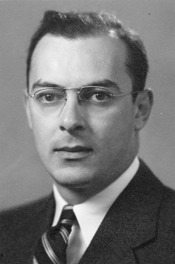John Bardeen

John Bardeen (May 23, 1908 – January 30, 1991) was an American physicist and electrical engineer, the only person to have won the Nobel Prize in Physics twice: first in 1956 with William Shockley and Walter Brattain for the invention of the transistor; and again in 1972 with Leon N Cooper and John Robert Schrieffer for a fundamental theory of conventional superconductivity known as the BCS theory.
The transistor revolutionized the electronics industry, allowing the Information Age to occur, and made possible the development of almost every modern electronic device, from telephones to computers to missiles. Bardeen's developments in superconductivity, which won him his second Nobel, are used in Nuclear Magnetic Resonance Spectroscopy (NMR) or its medical sub-tool magnetic resonance imaging (MRI).
In 1990, John Bardeen appeared on LIFE Magazine's list of "100 Most Influential Americans of the Century."
John Bardeen was born in Madison, Wisconsin, on May 23, 1908, son of Dr. Charles R. Bardeen, and Althea Harmer. Dr. Bardeen was Professor of Anatomy, and Dean of the Medical School of the University of Wisconsin at Madison. After the death of Althea, when John was about twelve years old, Dr. Bardeen married Ruth Hames, now Mrs. Kenelm McCauley, of Milwaukee, Wisconsin.
From 1938-1941, Bardeen was an Assistant Professor of Physics at the University of Minnesota and from 1941-1945 a civilian physicist at the Naval Ordnance Laboratory in Washington, D.C. Work done during the war was on influence fields of ships for application to underwater ordnance and mine-sweeping. After the war, in late 1945, he joined the solid state research group at the Bell Telephone Laboratories, and remained there until 1951, when he was appointed Professor of Electrical Engineering and of Physics at the University of Illinois. Since 1959 he has also been a member of the Center for Advanced Study of the University.
Main fields of research since 1945 have been electrical conduction in semiconductors and metals, surface properties of semiconductors, theory of superconductivity, and diffusion of atoms in solids. In 1957, Bardeen and two colleagues, L.N. Cooper and J.R. Schrieffer, proposed the first successful explanation of superconductivity. Much of his research effort since that time has been devoted to further extensions and applications of the theory.
He is a Fellow of the American Physical Society, has been (1954-1957) a member of its Council, and on the Editorial Board of The Physical Review and Reviews of Modern Physics. From 1959-1962, he served as a member of the United States President's Science Advisory Committee.
Bardeen was elected to the National Academy of Sciences in 1954. Honours include the Stuart Ballentine Medal of the Franklin Institute, Philadelphia (1952) and the John Scott Medal of the City of Philadelphia (1955), both awarded jointly with Dr. W.H. Brattain, the Buckley Prize of the American Physical Society (1955) and D.Sc. (Hon.) from Union College and from the University of Wisconsin. He received the Fritz London Award for work in low temperature physics in 1962.
Bardeen married Jane Maxwell in 1938. They have three children, James Maxwell, William Allen and Elizabeth Ann.
More: http://www.nobelprize.org/nobel_prize...
http://www.nobelprize.org/nobel_prize...
http://www.nobelprize.org/nobel_prize...
http://www.pbs.org/transistor/album1/...
http://inventors.about.com/od/bstarti...
http://www.aps.org/programs/outreach/...
http://www.biography.com/people/john-...
http://physics.illinois.edu/people/me...
